Celtic Patterns in Contemporary Clothing: Embracing Heritage in Modern Fashion
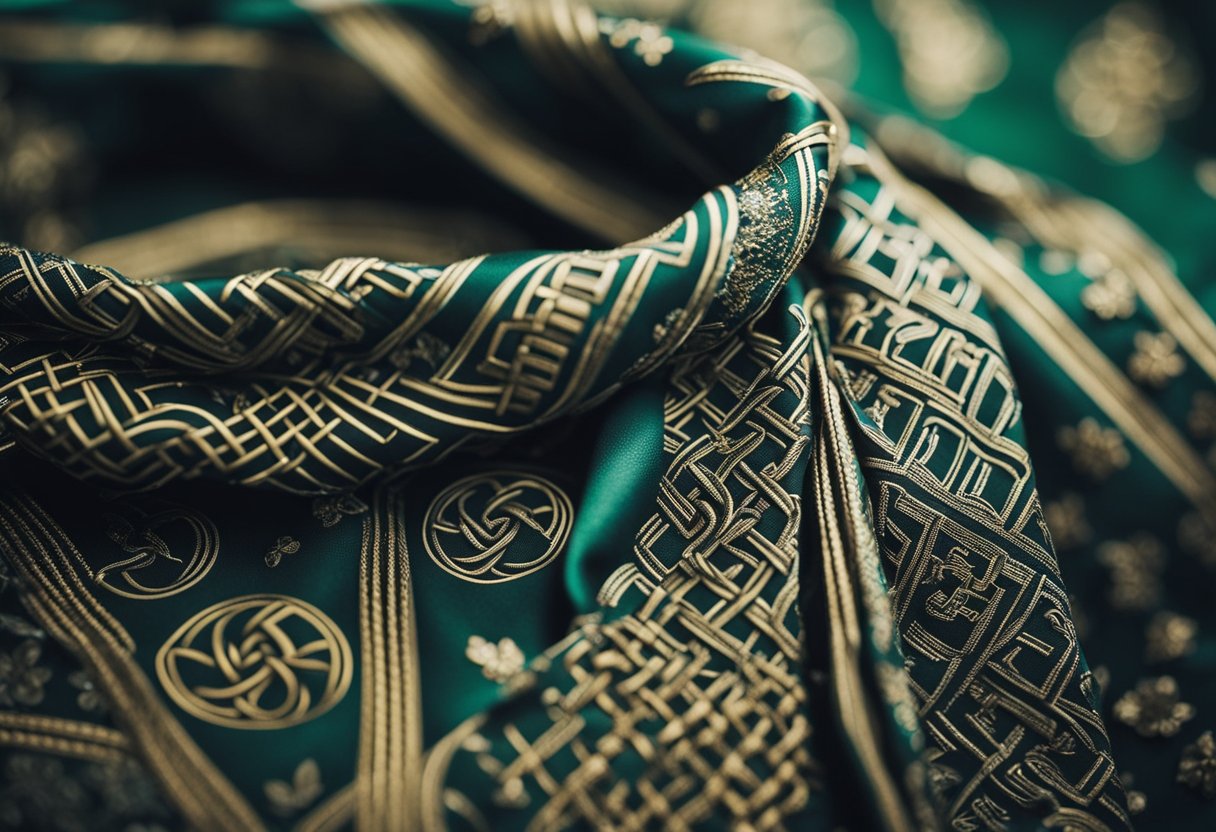
Updated On: March 17, 2024 by Eman Sameh
Celtic patterns have long been a symbol of intricate beauty and complex symbolism, weaving the tales of a rich cultural past into the very fabric of garments. Today, these historical motifs are experiencing a resurgence as they boldly step into the realm of contemporary clothing, bringing with them a sense of heritage and timeless elegance. Designers are artfully incorporating these traditional designs into modern fashion, celebrating Celtic culture while making a distinct statement in an industry that constantly seeks to reinvent itself.
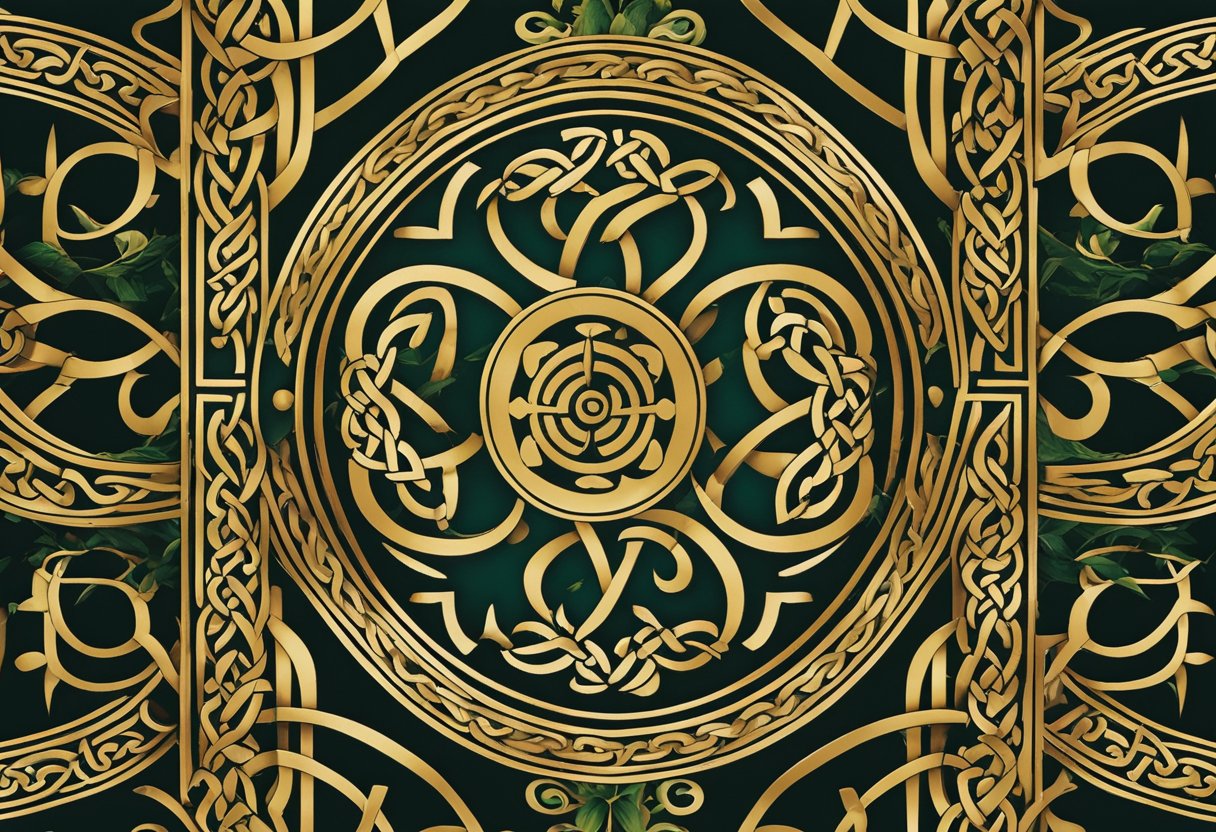
The adaptation of Celtic patterns in today’s fashion landscape is not just about aesthetic revival; it represents a deeper connection to nature, symbolism, and the ancient artistry of the Celts. Fashion enthusiasts and designers alike are drawn to the meaningful stories behind these designs, integrating them into everything from casual wear to haute couture. This fusion of past and present showcases a fashion revolution honouring the earthy hues, organic shapes, and sustainability ingrained in Celtic tradition. With each stitch and pattern, contemporary clothing becomes a canvas for expressing identity, cultural heritage, and a commitment to ethical fashion practices.
Historical Origins of Celtic Patterns
Celtic patterns have a rich and varied history, stemming from ancient European roots and evolving through interaction with neighbouring cultures. Their distinctiveness has played a crucial role in the fashion world, influencing contemporary clothing styles with traditional designs.
Iron Age Beginnings
The genesis of Celtic patterns can be traced back to the Iron Age, particularly within Celtic-speaking communities. During this era, our ancestors developed an artistic style characterised by intricately interlaced designs, geometric shapes, and evocative symbolism. These motifs we recognise today as traditional Celtic designs were not only prevalent in their metalwork and jewellery but also embellished their clothing and textiles. Found across various archaeological sites, these early artistic expressions laid the foundation for what would become a timeless aspect of Celtic identity.
Roman and Greek Influences
When Rome expanded its empire, it inevitably encountered the Celts. This interaction brought about an exchange of cultural practices, evident in the way Celtic designs began to incorporate elements of Roman and Greek art. Such influences are perceptible in Celtic coinage and sculpture, with patterns displaying a blend of local and classical styles. The classical scrollwork and foliage typical of these great civilisations made their way into Celtic designs, adding a new dimension to a rich visual vocabulary.
The Renaissance and Celtic Revival
During the Renaissance, a renewed interest in the arts and culture of classical antiquity inspired our forebears to revisit and reinterpret Celtic motifs. Then, with the onset of the Celtic Revival in the 19th and early 20th centuries, there was a significant resurgence in using traditional Celtic patterns. Artists and craftsmen sought to reconnect with our heritage, leading to the reintegration of these designs into modern fashion and decoration, thus revitalising an appreciation for Celtic aesthetics. This period reaffirmed the cultural significance and beauty of Celtic patterns, ensuring their lasting presence in the design world.
Traditional Textiles and Materials
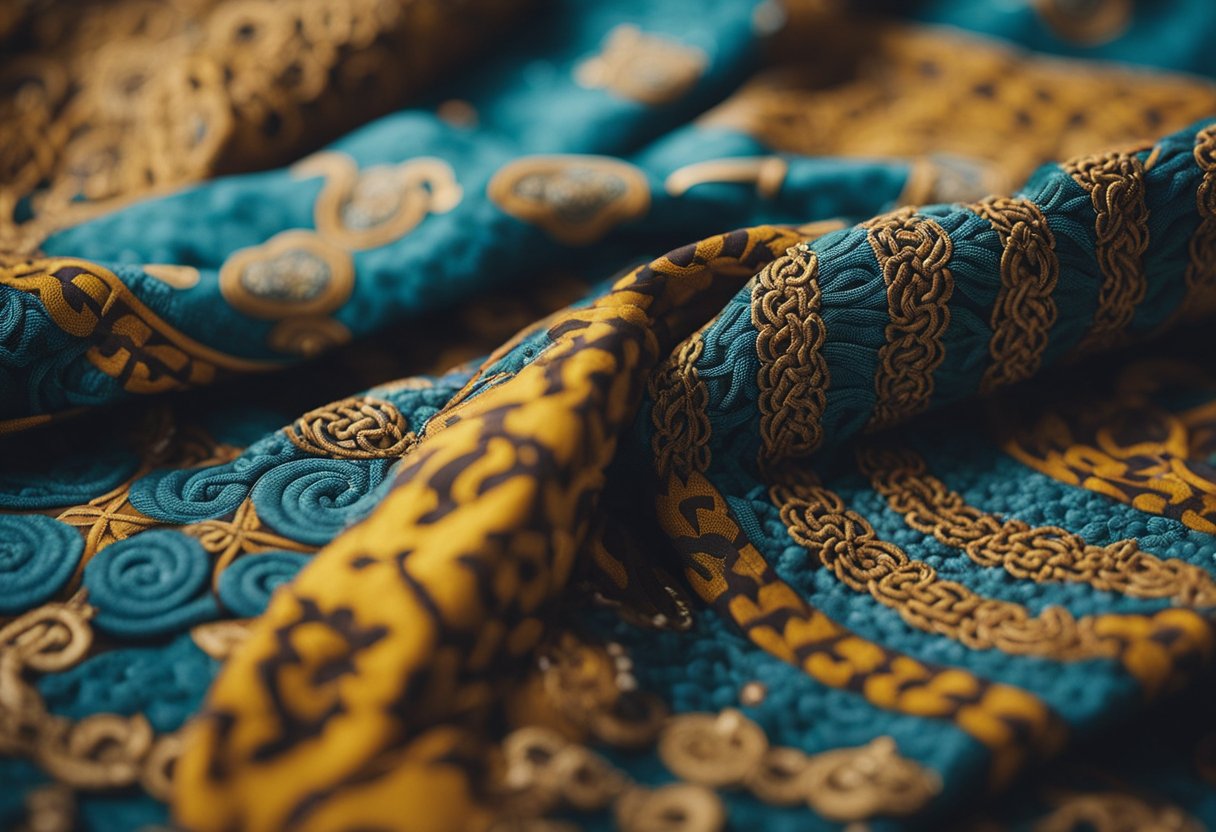
In the realm of fashion, traditional textiles and materials have stood as testaments to cultural heritage. Their continued use in contemporary clothing breathes new life into age-old practices, particularly in the Celtic tradition where wool, linen, leather, and silk reflect a deep-rooted historical significance.
Wool and Linen Usage
Celtic cultures have long valued wool for its durability and warmth. Lands blessed with harsh climates often turned to the insulating properties of wool to create garments that could withstand the elements. Traditional Celtic cloaks, kilts, and tunics commonly featured this material. Today, we see a resurgence of wool in modern fashion, being woven into everything from everyday apparel to avant-garde runway pieces, often dyed with natural substances to create a palette reflective of the earthy tones found in Celtic art and landscapes.
Linen, derived from the flax plant, is renowned for its lightweight and breathable qualities. Linen was historically used for undergarments and summer wear, its cool touch providing comfort during warmer seasons. We’ve brought linen back into the spotlight, harnessing these same benefits in creating contemporary garments that echo the past while suiting the modern wearer’s needs.
Leather and Silk
Celtic warriors and craftsmen revered leather for its strength and flexibility. Leather was used in myriad ways, from protective armour to robust footwear. In contemporary fashion, leather has found a niche not only as a sturdy material but also as a luxury fabric. Its textural diversity allows us to craft everything from the supplest of jackets to the most rugged of boots. The aesthetic of leather’s natural grain presents an earthy connection to Celtic origins, often enhanced by artisanal craftsmanship.
Silk, while less common in ancient times due to its rarity, was a symbol of status and wealth. When it did appear in Celtic society, it was often through trade and was typically reserved for the elite. This rich, lustrous material has transitioned seamlessly into the contemporary era, illuminating high fashion with its refined sheen. Silk’s graceful drape and soft hand make it a favourite for luxury garments, paying homage to its esteemed Celtic past.
Celtic Design Elements in Modern Fashion
In the eclectic world of fashion, the time-honoured aesthetics of Celtic design have found new expression. Weaving ancient tradition with the contemporary, these elements infuse modern apparel with an air of mystique and timeless beauty.
Iconic Features and Motifs
Celtic design is characterised by its intricate knotwork, spirals, and interlacing patterns, elements that are now being reinvented in today’s fashion scene. Knotwork, for instance, has been central to Celtic art for centuries, symbolising the eternal cycle of life and the interconnectedness of all things. These motifs are being seamlessly incorporated into modern garments, from the elaborate detail on a haute couture gown to the printed designs on everyday wear.
The use of Celtic Patterns in Celtic Fusion Design brings together traditional artistry with a modern flair. Designers are increasingly drawing inspiration from the rich tapestry of Celtic symbols, ensuring that every piece of clothing is not just a product of design, but a canvas for cultural storytelling. This fusion represents a blend of history and contemporary style, creating artistic and wearable pieces.
Implementation in High Fashion
Within the ambit of Haute Couture, the elegance and complexity of Celtic patterns have inspired a new wave of contemporary designers to reimagine this heritage. Adopting these age-old motifs, they have created collections that stand at the nexus of luxury and folklore, appealing to a clientele that values both craftsmanship and pedigree.
Designers are meticulously infusing Celtic elements into high fashion, resulting in garments that are not simply clothes but exquisite works of art. This incursion of historic Celtic design into high fashion is paving the way for a unique aesthetic that marries artistic expression with sophisticated elegance. Whether through embroidery, weaving, or digital printing, these designs echo the past while embracing the avant-garde allure of current trends.
Celtic Jewelry and Accessories
We would like to highlight the enduring appeal of Celtic designs in today’s fashion, particularly through jewellery and accessories that continue to inspire and fascinate. Rich in history and symbolism, these pieces often incorporate traditional motifs into contemporary styles.
Torcs and Brooches
Torcs, the majestic neckrings of ancient Celtic society, have been crafted from various materials, predominantly silver and gold. Once a symbol of nobility and status, they are now cherished for their unique beauty and cultural significance. Similarly, brooches, renowned for their intricate knotwork and craftsmanship, were not only decorative but also highly functional, fastening garments in a style that has transcended time.
Contemporary Celtic-Inspired Jewelry
Contemporary Celtic-inspired jewellery harnesses the allure of time-honoured patterns, such as the endless knot, into modern pieces. We see the fusion of old and new as designers reimagine these iconic motifs, imbuing them with a modern twist. Today’s jewellery combines classic Celtic knotwork with innovative designs in earrings, pendants, and bracelets. This offers a fresh perspective while retaining the heritage that makes each piece uniquely meaningful.
Influence of Nature and Symbolism
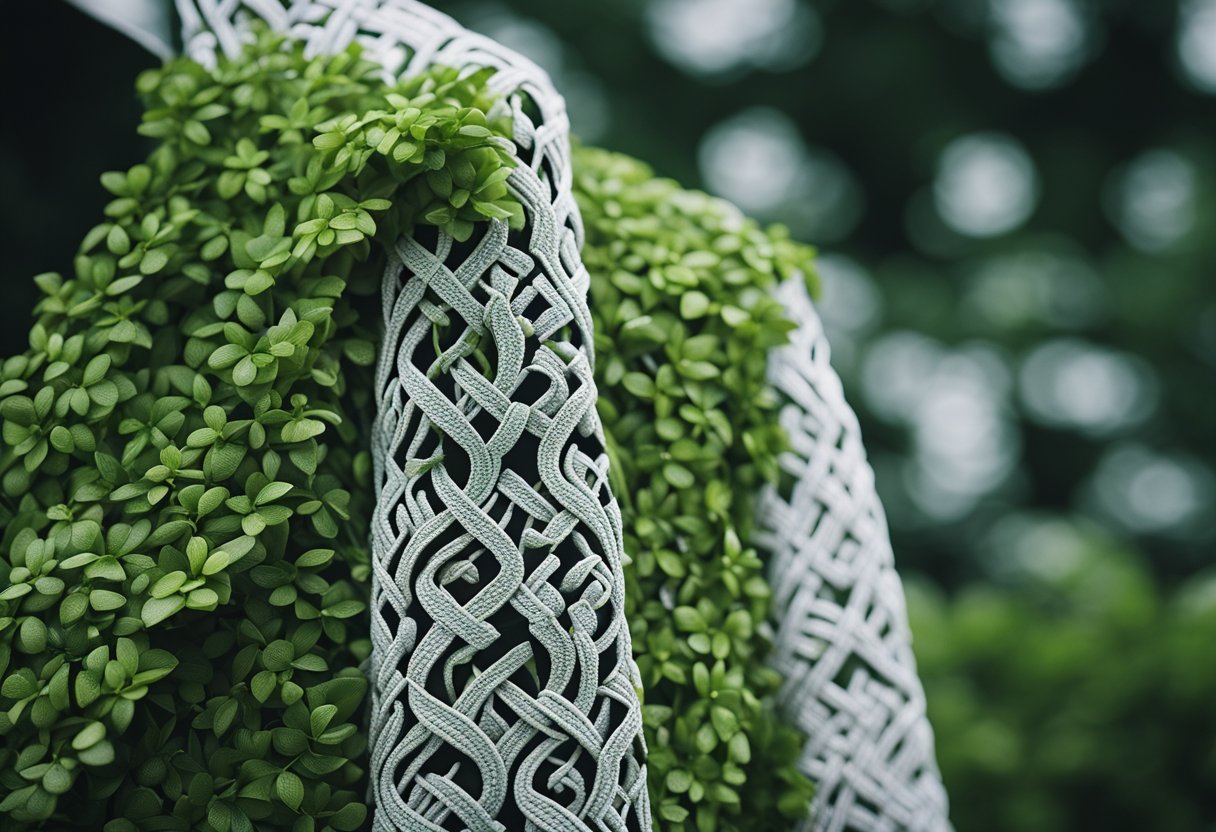
Celtic patterns are inherently connected to the natural world and its mystical aspects, offering fashion an infusion of deep symbolism and historical significance.
Animal and Knotwork Patterns
In Celtic design, knotwork patterns manifest as endless loops, signifying the eternal cycle of life, death, and rebirth. These patterns often intertwine with representations of animals, each bearing a distinct meaning. For instance, the serpent is associated with healing and transformation, while the horse is emblematic of power and success. Clothing that incorporates such animal patterns not only captures the essence of Celtic art but also conveys the attributes associated with these creatures.
Symbolic Motifs and Spirituality
Celtic symbols, such as triquetra and triskelion, carry spiritual undertones, symbolizing concepts like the Trinity and life’s progress. The use of these symbols in contemporary fashion reflects a yearning for a connection with the spiritual roots of nature. Integrating these motifs into apparel infuses them with layers of meaning, echoing the age-old respect for the Earth and the divine seen in Celtic spirituality. These symbolic motifs serve not just an aesthetic function but also impart the wearers with a sense of identity and cultural continuity.
Celtic Patterns in Apparel
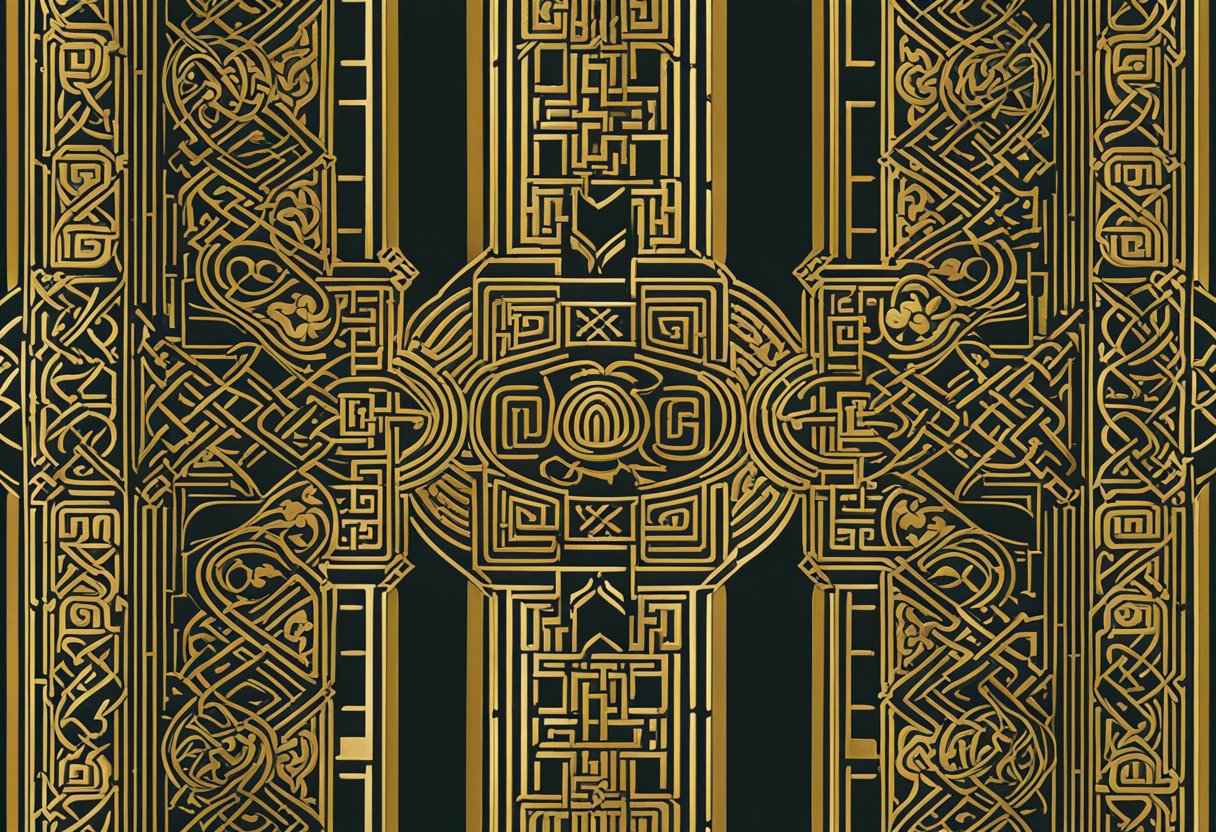
Celtic patterns have become an iconic feature in contemporary clothing, intricately weaving history and modernity in their designs. These patterns showcase a rich cultural heritage that has been embraced in both men’s and women’s apparel, creating a fashion revolution.
Women’s and Men’s Clothing
Celtic designs offer an aesthetic that transcends gender, infusing both women’s clothing and men’s clothing with equal parts tradition and contemporary style. Women’s attire often includes skirts and dresses that feature Celtic knotwork, reflecting the interlacing lines of ancient symbols. Men’s garments adopt these designs in their woollen jumpers and casual wear, ensuring that the cultural narrative is always present.
- Dresses: Incorporating intricate knot patterns or stylised animal motifs.
- Men’s Shirts: Infused with subtle Celtic detailing on collars or cuffs.
Dresses, Kilts, and Aran Sweaters
Dresses tailored with Celtic patterns offer an elegant way to celebrate one’s heritage while making a modern fashion statement. Think A-line skirts adorned with spirals and crosses that speak to the Iron Age roots of Celtic artisanship.
Kilts, historically a hallmark of Scottish attire, now come in various styles that pay homage to Celtic design. They are as much at home on a runway as they are at traditional Highland games.
- Kilts: A symbol of national pride, made fashionable with contemporary fabrics and hues.
- Aran sweaters: have transcended their utilitarian origin as fishermen’s garments to become a mainstay in fashion, thanks to their distinctive, chunky woollen weaves and elaborate and meaningful patterns.
- Aran Sweaters: Often feature prominent cable patterns, each with its own story and history.
By integrating these elements, we observe a seamless blend of durability and design, making Celtic clothing a testament to both its cultural significance and timeless appeal.
Celtic Cultural Heritage and Identity
We explore the integral role of Celtic patterns in contemporary clothing, where they become more than mere designs; they signify a profound cultural heritage and identity.
Celtic Nations and Historical Roots
Celtic nations such as Scotland, Ireland, and Wales possess a rich heritage that has been conveyed through intricate patterns for generations. These designs are not simply aesthetic; they encapsulate tales, beliefs, and the very essence of the Celtic culture. The historical roots of these patterns date back to the Iron Age, where Celts thrived across Europe, leaving their indelible mark through art, language, and societal structures.
Celtic Renaissance and Cultural Revival
The Celtic Renaissance ushered in a period of cultural revival, where appreciation for Celtic art and traditions surged. This resurgence is not confined to the past; it carries forward into the modern age, infusing contemporary fashion with the Celtic spirit. Designers draw from our ancestors’ creativity, intertwining historical motifs with the elegance of modern style, thereby celebrating and preserving our heritage. This blend of old and new reflects a respect for our roots while evolving our identity.
Sustainability and Ethical Fashion

In the sphere of contemporary fashion, we recognise the crucial role of eco-friendly materials and sustainable practices. This commitment not only revitalises style with traditional Celtic patterns but also echoes the global demand for environmental responsibility and ethical standards in the industry.
Eco-Friendly Materials and Practices
Our focus on eco-friendly materials such as organic cotton, bamboo, and recycled fabrics reflects our dedication to reducing environmental impact. We meticulously select materials that not only provide durability and comfort but also ensure a lower carbon footprint during production.
Sustainable practices are the cornerstone of our approach to fashion. We are proud to implement techniques that conserve natural resources, from water-saving dyeing methods to energy-efficient manufacturing processes. Our brand takes tangible steps towards a sustainable future by embracing these eco-conscious options.
Garment Construction and Embellishment
In the realm of contemporary clothing, the nuanced art of Celtic patterns plays a pivotal role. Our approach to garment construction and embellishment is a testament to the profound influence of these age-old designs.
Weaving and Spinning Techniques
Weaving and spinning are integral in creating the fabrics that enable the beautiful Celtic designs to come to life. We utilise a variety of threads ranging from natural fibres to high-tech synthetics, each chosen for their unique qualities. Traditional hand-weaving techniques have been modernised to incorporate intricate Celtic motifs into contemporary fashion.
- Spinning: We use traditional and modern spinning methods to produce strong, fine threads.
- Weaving: Our looms intertwine these threads, crafting durable fabrics that serve as the canvas for Celtic artistry.
Embroidery and Dyeing Methods
Embroidery and dyeing are central to the embellishment of Celtic-themed attire. We incorporate a rich palette of colours, often inspired by nature, using dyes that are both vibrant and enduring. Our skilled artisans embroider garments with Celtic knots and spirals, using a multitude of stitches to create depth and texture.
- Embroidery: Our designs are meticulously embroidered, focusing on maintaining the integrity and detail of traditional Celtic patterns.
- Dyeing: We apply dynamic and lasting dyes to our fabrics, ensuring the colours resonate with the strength of Celtic heritage.
Through this meticulous integration of garment construction and embellishment, we honour the Celtic legacy.
Celtic Patterns in the Fashion Industry
Celtic patterns have made a significant impact on the fashion industry, weaving their intricate beauty into modern designs. These traditional motifs have transitioned gracefully from historical artefacts to trendsetting elements in contemporary attire.
Influence on Celebrities and Designers
Celtic designs have caught the eye of celebrities and fashion designers, integrating ancient symbols with contemporary fashion. These patterns have been sported by notable public figures, enhancing the visibility and appreciation of Celtic art. Designers are often inspired by the rich tapestry of Celtic motifs, infusing them in their collections to create timeless garments.
Copyright and Originality in Designs
The unique nature of Celtic patterns poses challenges regarding copyright and originality. Designers strive to respect the historical significance while creating innovative apparel. Ensuring originality in their designs, they work within legal frameworks to protect their work and acknowledge the cultural heritage that inspires them.
Frequently Asked Questions
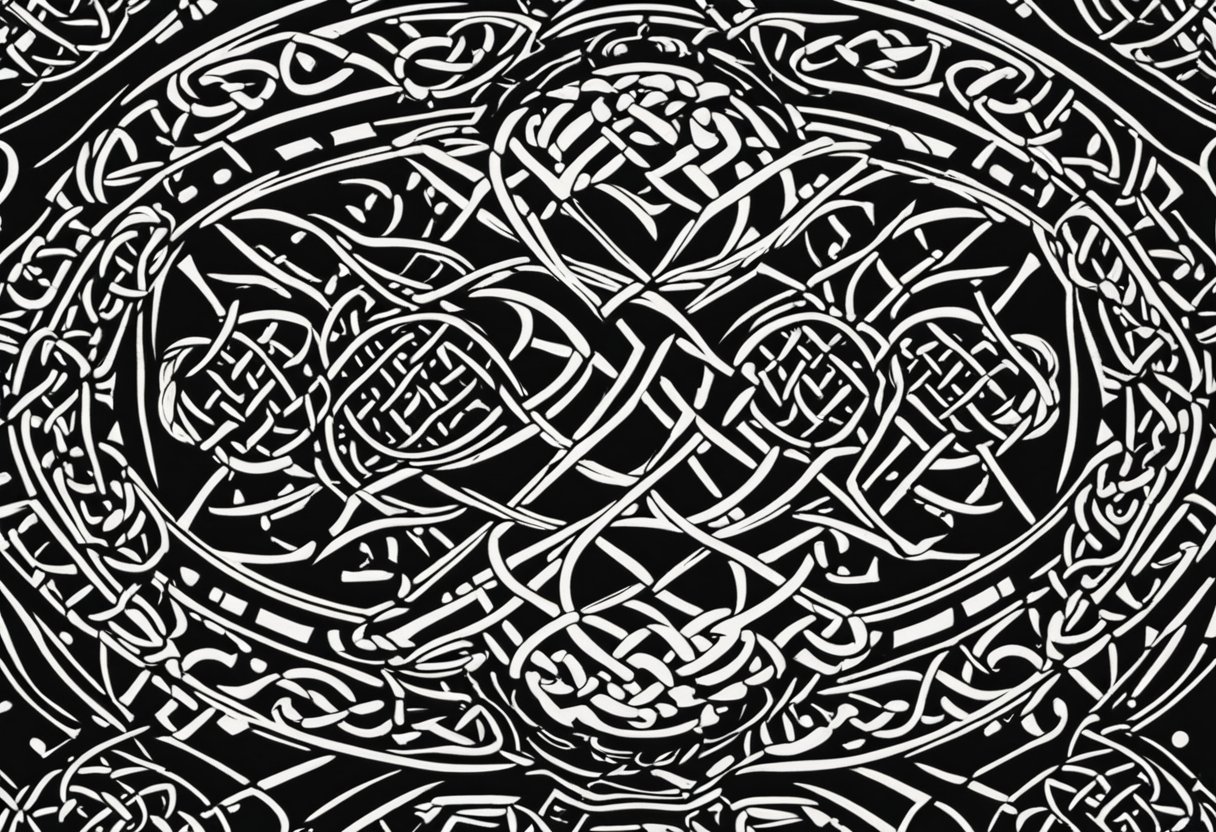
In this section, we’re addressing common inquiries about the interplay between Celtic designs and contemporary fashion. We’ll explore the impact of Celtic heritage on modern trends, examine key elements of traditional Irish garments, and discuss the incorporation of ethnic patterns through the fashion revolution movement.
How have Celtic designs influenced modern fashion trends?
Celtic designs have permeated modern fashion through the use of intricate knotwork and interlacing patterns. These motifs are often seen on contemporary garments, providing a historical touch to modern styles.
What are the key elements of traditional Irish garments for women?
Traditional Irish garments for women often include items like the Aran jumper, with its distinctive cable patterns symbolising Irish fishermen’s ropes, and the use of linen in items such as the classic Irish ‘Léine’, which has evolved into stylish tunics in current wardrobes.
What distinguishes traditional Celtic clothing from other historical attire?
Traditional Celtic clothing is distinct in its utilisation of unique tartan patterns, which are specific to different clans, and the traditional ‘brat’, a type of cloak, which has influenced current outerwear with its functionality and style.
How has the fashion revolution movement impacted the inclusion of ethnic patterns in contemporary design?
The fashion revolution movement has heightened awareness and appreciation for cultural heritages, leading to a more conscientious inclusion of ethnic patterns, like Celtic designs, in contemporary clothing that honours traditional craftsmanship and storytelling.
In what ways is traditional Irish male clothing represented in today’s fashion?
Traditional Irish male clothing, typified by the iconic ‘grandad’ shirt and the kilt-like ‘léine’, manifests in today’s fashion with a rise in the popularity of band collars and utility kilts, reflecting a modern twist on heritage garments.
What historical aspects of Celtic attire are in current Irish clothing styles?
Current Irish clothing styles continue to showcase historical aspects of Celtic attire through the use of herringbone and tweed in modern tailoring, reflecting the enduring influence of traditional wool weaving techniques native to Ireland.






